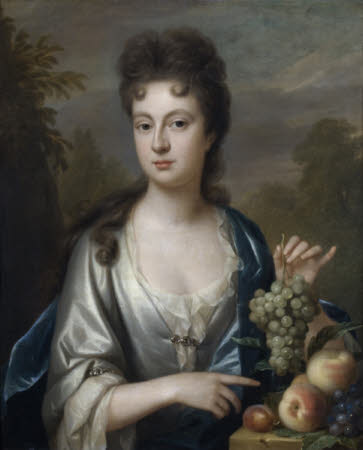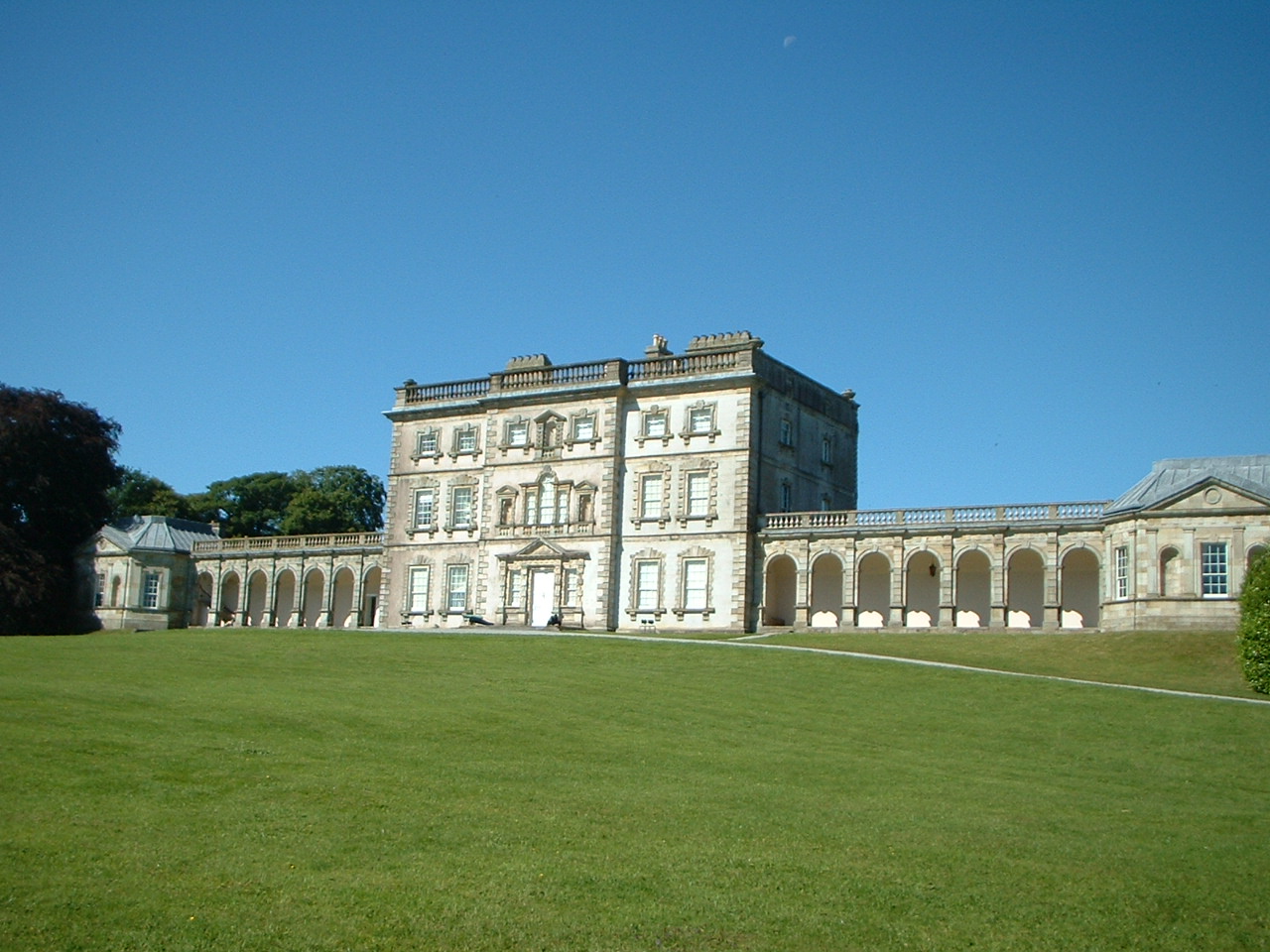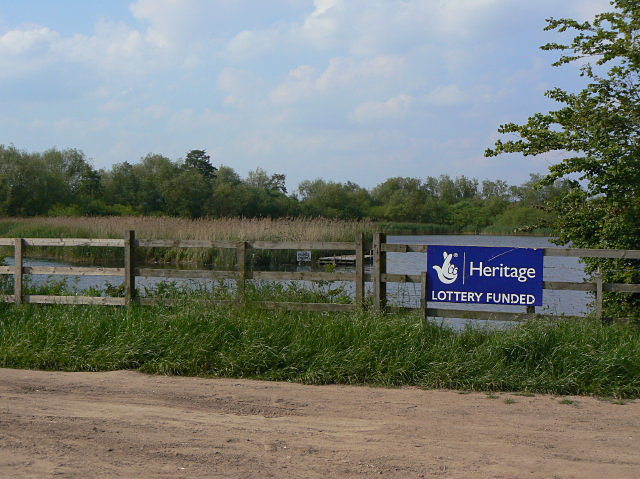|
Florence Court
Florence Court is a large 18th-century house and estate located 8 miles south-west of Enniskillen, County Fermanagh, Northern Ireland. It is set in the foothills of Cuilcagh Mountain. The nearby village is distinguished by the one-word name Florencecourt. It is owned and managed by the National Trust and is the sister property of nearby Castle Coole. The other National Trust property in County Fermanagh is the Crom Estate. History The history of the building of Florence Court is subject to conjecture and the current house was built in at least two, if not three, phases. The first house on the site was built by John Cole (1680–1726) and named after his wife Florence Bourchier Wrey (died 1718). She was the daughter of Sir Bourchier Wrey, 4th Baronet (c. 1653–1696) of Tawstock, Devon. An anonymous history of Fermanagh written in 1718 describes John Cole's house as being 'very costly and sumptuous' but in 1739 Rev. William Henry described this building as being 'but small, ... [...More Info...] [...Related Items...] OR: [Wikipedia] [Google] [Baidu] |
National Trust
The National Trust () is a heritage and nature conservation charity and membership organisation in England, Wales and Northern Ireland. The Trust was founded in 1895 by Octavia Hill, Sir Robert Hunter and Hardwicke Rawnsley to "promote the permanent preservation for the benefit of the Nation of lands and tenements (including buildings) of beauty or historic interest". It has since been given statutory powers, starting with the National Trust Act 1907. Historically, the Trust acquired land by gift and sometimes by public subscription and appeal, but after World War II the loss of country houses resulted in many such properties being acquired either by gift from the former owners or through the National Land Fund. One of the largest landowners in the United Kingdom, the Trust owns almost of land and of coast. Its properties include more than 500 historic houses, castles, archaeological and industrial monuments, gardens, parks, and nature reserves. Most properties are open ... [...More Info...] [...Related Items...] OR: [Wikipedia] [Google] [Baidu] |
Rococo
Rococo, less commonly Roccoco ( , ; or ), also known as Late Baroque, is an exceptionally ornamental and dramatic style of architecture, art and decoration which combines asymmetry, scrolling curves, gilding, white and pastel colours, sculpted moulding, and ''trompe-l'œil'' frescoes to create surprise and the illusion of motion and drama. It is often described as the final expression of the Baroque movement. The Rococo style began in France in the 1730s as a reaction against the more formal and geometric Louis XIV style. It was known as the "style Rocaille", or "Rocaille style". It soon spread to other parts of Europe, particularly northern Italy, Austria, southern Germany, Central Europe and Russia. It also came to influence other arts, particularly sculpture, furniture, silverware, glassware, painting, music, theatre, and literature. Although originally a secular style primarily used for interiors of private residences, the Rococo had a spiritual aspect to it which led to ... [...More Info...] [...Related Items...] OR: [Wikipedia] [Google] [Baidu] |
Nature Reserve
A nature reserve (also known as a wildlife refuge, wildlife sanctuary, biosphere reserve or bioreserve, natural or nature preserve, or nature conservation area) is a protected area of importance for flora, fauna, funga, or features of geological or other special interest, which is reserved and managed for purposes of Conservation (ethic), conservation and to provide special opportunities for study or research. They may be designated by government institutions in some countries, or by private landowners, such as charities and research institutions. Nature reserves fall into different IUCN protected area categories, IUCN categories depending on the level of protection afforded by local laws. Normally it is more strictly protected than a nature park. Various jurisdictions may use other terminology, such as ecological protection area or private protected area in legislation and in official titles of the reserves. History Cultural practices that roughly equate to the establishmen ... [...More Info...] [...Related Items...] OR: [Wikipedia] [Google] [Baidu] |
Larch
Larches are deciduous conifers in the genus ''Larix'', of the family Pinaceae (subfamily Laricoideae). Growing from tall, they are native to the cooler regions of the northern hemisphere, where they are found in lowland forests in the high latitudes, and high in mountains further south. Larches are among the dominant plants in the boreal forests of Siberia and Canada. Although they are conifers, larches are deciduous trees that lose their needles in the autumn. Description and distribution The tallest species, '' Larix occidentalis'', can reach . Larch tree crowns are sparse, with the major branches horizontal; the second and third order branchlets are also ± horizontal in some species (e.g. '' L. gmelinii'', '' L. kaempferi''), or characteristically pendulous in some other species (e.g. '' L. decidua'', '' L. griffithii''). Larch shoots are dimorphic, with leaves borne singly on long shoots typically long and bearing several buds, and in dense clusters of 20–50 need ... [...More Info...] [...Related Items...] OR: [Wikipedia] [Google] [Baidu] |
Pasture
Pasture (from the Latin ''pastus'', past participle of ''pascere'', "to feed") is land used for grazing. Types of pasture Pasture lands in the narrow sense are enclosed tracts of farmland, grazed by domesticated livestock, such as horses, cattle, sheep, or swine. The vegetation of tended pasture, forage, consists mainly of grasses, with an interspersion of legumes and other forbs (non-grass herbaceous plants). Pasture is typically grazed throughout the summer, in contrast to meadow which is ungrazed or used for grazing only after being mown to make hay for animal fodder. Pasture in a wider sense additionally includes rangelands, other unenclosed pastoral systems, and land types used by wild animals for grazing or browsing. Pasture lands in the narrow sense are distinguished from rangelands by being managed through more intensive agricultural practices of seeding, irrigation, and the use of fertilizers, while rangelands grow primarily native vegetation, managed with e ... [...More Info...] [...Related Items...] OR: [Wikipedia] [Google] [Baidu] |
William Cole, 1st Earl Of Enniskillen
William Willoughby Cole, 1st Earl of Enniskillen (1 March 1736 – 22 May 1803), styled The Honourable from 1760 to 1767, then known as the Lord Mountflorence to 1776 and as the Viscount Enniskillen to 1789, was an Irish peer and politician. Enniskillen was the eldest son of John Cole, 1st Baron Mountflorence of Florence Court, County Fermanagh. Cole represented Enniskillen in the Irish House of Commons from 1761 to 1767, when he succeeded his father as 2nd Baron Mountflorence and took his seat in the Irish House of Lords. In 1776, he was created Viscount Enniskillen and in 1789 he was even further honoured when he was made Earl of Enniskillen. Both these titles are in the Peerage of Ireland. Private life In November 1763 Enniskillen married Anne, daughter of Galbraith Lowry-Corry, Member of the Irish Parliament for County Tyrone and sister of Armar Lowry-Corry, 1st Earl Belmore. They had four sons and four daughters: * John Willoughby Cole, 2nd Earl of Enniskillen (23 Marc ... [...More Info...] [...Related Items...] OR: [Wikipedia] [Google] [Baidu] |
Greenhouse
A greenhouse is a structure that is designed to regulate the temperature and humidity of the environment inside. There are different types of greenhouses, but they all have large areas covered with transparent materials that let sunlight pass and block it as heat. The most common materials used in modern greenhouses for walls and roofs are rigid plastic made of polycarbonate, plastic film made of polyethylene, or glass panes. When the inside of a greenhouse is exposed to sunlight, the temperature increases, providing a sheltered environment for plants to grow even in cold weather. The terms greenhouse, glasshouse, and hothouse are often used interchangeably to refer to buildings used for cultivating plants. The specific term used depends on the material and heating system used in the building. Nowadays, greenhouses are more commonly constructed with a variety of materials, such as wood and polyethylene plastic. A glasshouse, on the other hand, is a traditional type of greenhouse ... [...More Info...] [...Related Items...] OR: [Wikipedia] [Google] [Baidu] |
Heritage Lottery Fund
The National Lottery Heritage Fund, formerly the Heritage Lottery Fund (HLF), distributes a share of National Lottery funding, supporting a wide range of heritage projects across the United Kingdom. History The fund's predecessor bodies were the National Land Fund, established in 1946, and the National Heritage Memorial Fund, established in 1980. The current body was established as the "Heritage Lottery Fund" in 1994. It was re-branded as the National Lottery Heritage Fund in January 2019. Activities The fund's income comes from the National Lottery, which is managed by Allwyn Entertainment. Its objectives are "to conserve the UK's diverse heritage, to encourage people to be involved in heritage and to widen access and learning". As of 2019, it had awarded £7.9 billion to 43,000 projects. In 2006, the National Lottery Heritage Fund launched the Parks for People program with the aim to revitalize historic parks and cemeteries. From 2006 to 2021, the Fund had granted £2 ... [...More Info...] [...Related Items...] OR: [Wikipedia] [Google] [Baidu] |
Heirloom Variety
An heirloom plant, heirloom variety, heritage fruit (Australia and New Zealand), or heirloom vegetable (especially in Ireland and the UK) is an old cultivar of a plant used for food that is grown and maintained by gardeners and farmers, particularly in isolated communities of the Western world. These were commonly grown during earlier periods in human history, but are not used in modern large-scale agriculture. In some parts of the world, it is illegal to sell seeds of cultivars that are not listed as approved for sale. The Henry Doubleday Research Association, now known as Garden Organic, responded to this legislation by setting up the Heritage Seed Library to preserve seeds of as many of the older cultivars as possible. However, seed banks alone have not been able to provide sufficient insurance against catastrophic loss. In some jurisdictions, like Colombia, laws have been proposed that would make seed saving itself illegal. Many heirloom vegetables have kept their traits th ... [...More Info...] [...Related Items...] OR: [Wikipedia] [Google] [Baidu] |
Walled Garden
A walled garden is a garden enclosed by high walls, especially when this is done for horticultural rather than security purposes, although originally all gardens may have been enclosed for protection from animal or human intruders. In temperate climates, especially colder areas, such as Scotland, the essential function of the walling of a garden is to shelter the garden from wind and frost, though it may also serve a decorative purpose. Kitchen gardens were very often walled, which segregated them socially, allowing the gardeners, who were usually expected to vanish from the "pleasure gardens" when the occupants of the house were likely to be about, to continue their work. The walls, which were sometimes heated, also carried fruit trees trained as espaliers. Historically, and still in many parts of the world, nearly all urban houses with any private outside space have high walls for security, and any small garden was thus walled by default. The same was true of many rural ho ... [...More Info...] [...Related Items...] OR: [Wikipedia] [Google] [Baidu] |
Taxus Baccata
''Taxus baccata'' is a species of evergreen tree in the family (botany), family Taxaceae, native to Western Europe, Central Europe and Southern Europe, as well as Northwest Africa, and parts of Southwest Asia.Rushforth, K. (1999). ''Trees of Britain and Europe''. Collins . It is the tree originally known as yew, though with other related trees becoming known, it may be referred to as common yew, European yew, or in North America English yew. It is a woodland tree in its native range, and is also grown as an ornamental tree, hedge or topiary. The plant is poisonous, with toxins that can be absorbed through inhalation, ingestion, and transpiration through the skin. Consuming any part of the tree, excluding the aril, can be deadly and the consumption of even a small amount of the foliage can result in death. Taxonomy and naming The word ''yew'' is from Old English ''īw, ēow'', ultimately from Proto-Indo-European ''*h₁eyHw-''. Possibly entered Proto-Germanic language, Germanic la ... [...More Info...] [...Related Items...] OR: [Wikipedia] [Google] [Baidu] |
Irish Yew
''Taxus baccata'' is a species of evergreen tree in the family Taxaceae, native to Western Europe, Central Europe and Southern Europe, as well as Northwest Africa, and parts of Southwest Asia.Rushforth, K. (1999). ''Trees of Britain and Europe''. Collins . It is the tree originally known as yew, though with other related trees becoming known, it may be referred to as common yew, European yew, or in North America English yew. It is a woodland tree in its native range, and is also grown as an ornamental tree, hedge or topiary. The plant is poisonous, with toxins that can be absorbed through inhalation, ingestion, and transpiration through the skin. Consuming any part of the tree, excluding the aril, can be deadly and the consumption of even a small amount of the foliage can result in death. Taxonomy and naming The word ''yew'' is from Old English ''īw, ēow'', ultimately from Proto-Indo-European ''*h₁eyHw-''. Possibly entered Germanic languages(discussion:Eihwaz) through a Celti ... [...More Info...] [...Related Items...] OR: [Wikipedia] [Google] [Baidu] |










